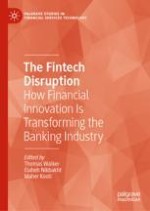2023 | OriginalPaper | Buchkapitel
2. Centralized and Decentralized Finance: Coexistence or Convergence?
verfasst von : Axel Wieandt, Laurenz Heppding
Erschienen in: The Fintech Disruption
Aktivieren Sie unsere intelligente Suche, um passende Fachinhalte oder Patente zu finden.
Wählen Sie Textabschnitte aus um mit Künstlicher Intelligenz passenden Patente zu finden. powered by
Markieren Sie Textabschnitte, um KI-gestützt weitere passende Inhalte zu finden. powered by
